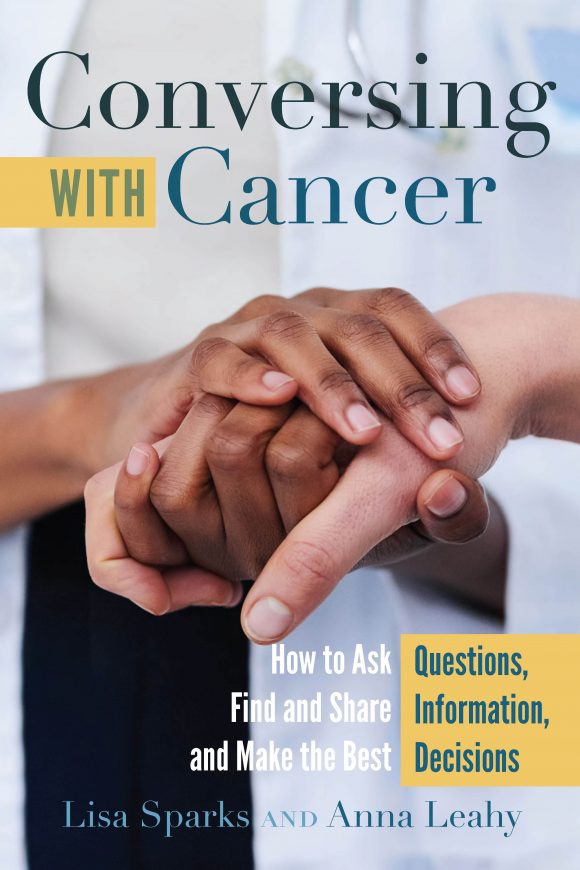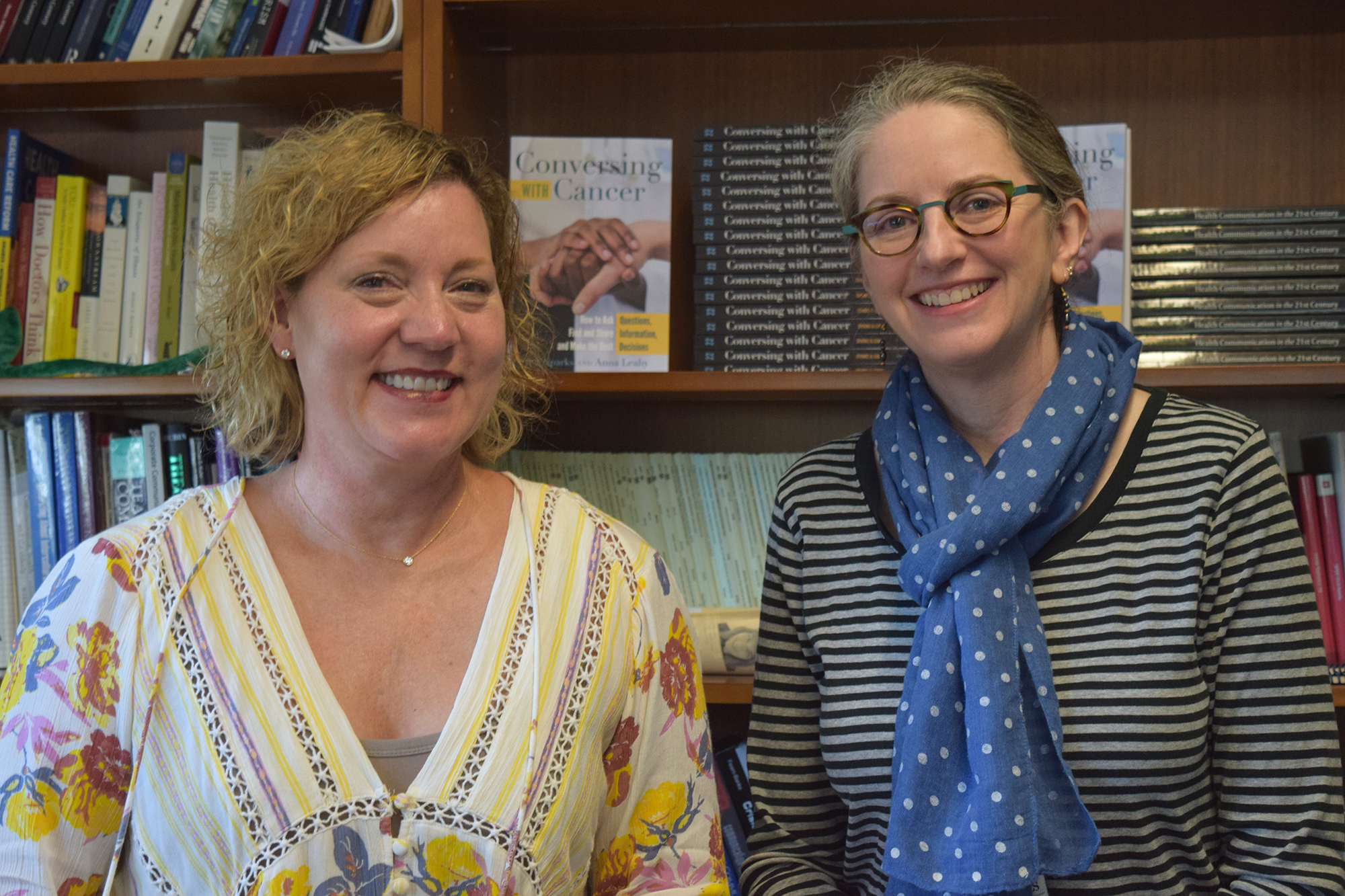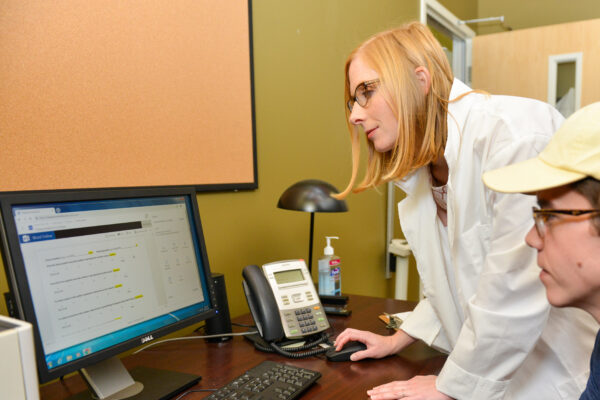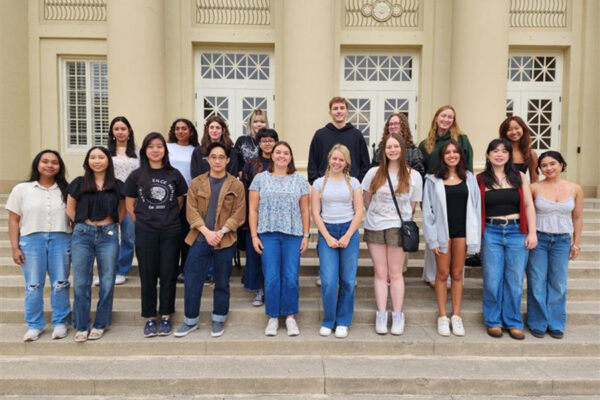Cancer begins heaven knows when. But for most people it announces itself with a jolt of a diagnosis, followed by various treatments, sidelined plans, lousy side effects, medical bills, leaves of absence, recovery and hope for remission.
It’s a lot for patients, family members and health practitioners to discuss, whichever direction the wild ride takes. And there’s no single good way to start that conversation, say two Chapman University professors. So they’ve written a guide, weaving in not just evidence-based research on health communication, but also their stories and poetry from writers who’ve sat through their own uncomfortable moments in doctors’ offices.
The result is “Conversing with Cancer: How to Ask Questions, Find and Share Information, and Make the Best Decisions” by Lisa Sparks, Ph.D., professor and dean of the School of Communication, and Anna Leahy, Ph.D., professor and director of the MFA in Creative Writing program. Their 12 themed chapters address a range of communication issues in health care and cancer in particular, from Internet overload to the demands of ongoing caregiving. A poem opens each chapter.
Research and Advice
 The authors wrote the book with health professionals and advanced communication studies students in mind. They discuss research into the ways different cultures and demographics deal with conversations around health and disease. But they also share personal insights from their own experience as caregivers to parents diagnosed with cancer and weave in the stories of others, giving the work a textbook-for-all sensibility.
The authors wrote the book with health professionals and advanced communication studies students in mind. They discuss research into the ways different cultures and demographics deal with conversations around health and disease. But they also share personal insights from their own experience as caregivers to parents diagnosed with cancer and weave in the stories of others, giving the work a textbook-for-all sensibility.
“I really hope it gets in the hands of patients and families who need it and that it gets beyond the classroom,” Sparks says.
Sparks’ considerable research and published writing in the area of cancer communication inform several chapters. For example, in a section on culture and cancer care, she describes study findings indicating that less educated patients were not accessing online cancer information.
Her work in this area reaches back to 2002, when she was awarded a fellowship at the National Cancer Institute, making her the first Cancer Communication Fellow within the National Institutes of Health. Just a few years prior, her father had died of lung cancer.
“I was living it. I was already writing about health communication. So I knew that at some point I was going to move to the cancer context when I was emotionally ready,” she says.
Likewise, Leahy brought personal experiences to the book, published as part of the Language as Social Action series from Peter Lang. Both her parents died of cancer, and her father’s initial diagnosis hit when she was a young teenager. In a section describing how to talk to children about a loved one’s illness, Leahy’s childhood experience serves as an example of how parents can be forthright but not overwhelming.
“It covers real-life situations and it has real-life applications, which was important to me,” Leahy says.
Patient-Centered Care
They also shaped the book to fit a health care trend that they say increasingly welcomes the patient as a partner in treatment, rather than just a case number moving through the medical system. So there are stories and narratives from several patients who discuss both strategies and feelings – a humorous blog for one, a distain for cheerful “battle” metaphors for another.
Such stories probably won’t likely change treatment decisions, but they are helpful reminders to health professionals that each patient brings a unique background to the process and honoring that can help patients weather the experience better, the authors say.
“Medicine is really shifting from a biomedical model to a patient-centered care model. And so this book takes that approach,” Sparks said.
Poetry and Cancer
And why the poetry?
“Poetry is an area of language that we turn to when we struggle to communicate what we’re thinking or feeling,” Leahy says. “And a cancer diagnosis, or going through treatment, that’s an experience for which we don’t have adequate language. So I think poetry is a natural place for us to turn when we’re figuring out how to communicate about cancer.”
Many of the poetic selections focus on defining moments, such as the laughable paper gowns in exam rooms. Or as poet Karen Paul Holmes writes, the moment when you hear a sister’s voice on the phone calling to report lab results and “you know before you know.”
This may be new territory for many students who come to the book in a health communication course, Sparks says. But probably not in the years to come, and certainly not as health professionals. In the U.S., approximately 40 out of 100 men and 38 out of 100 women will develop cancer during their lifetime, according to the American Cancer Society.
“When the opportunity comes up in their job as a health communication person, they can take into account that this is a real person, not just cancer and CT scans and the protocols,” she says. “And they’ll better understand how they can talk with them and find the best way forward that matches the biomedical model with their own real-life situation.”
Display image at top/Lisa Sparks, Ph.D., left, and Anna Leahy, Ph.D. (Photo/Livi Dom ’20)




